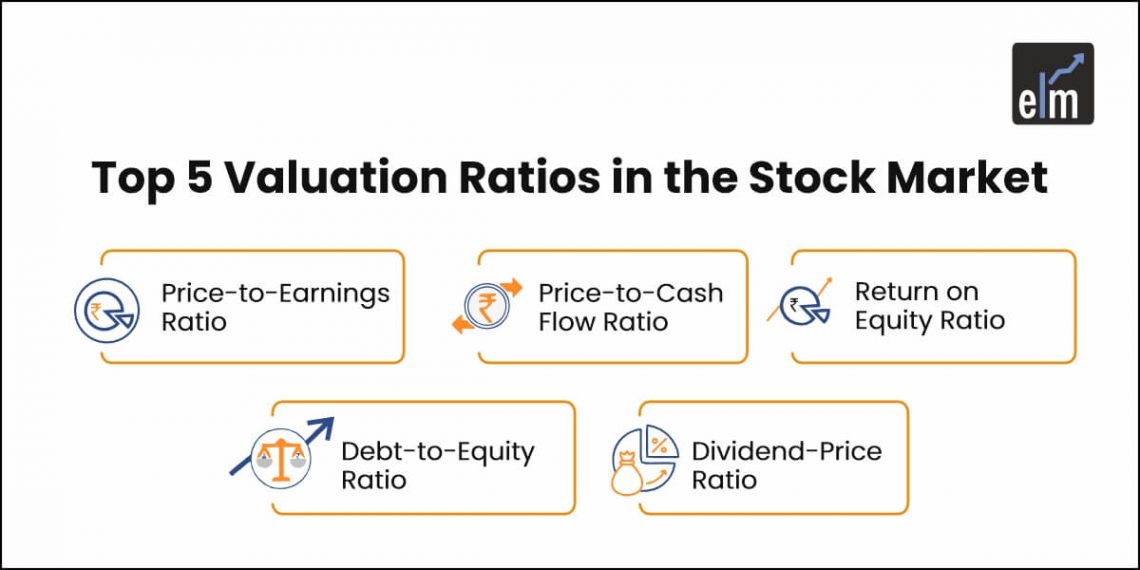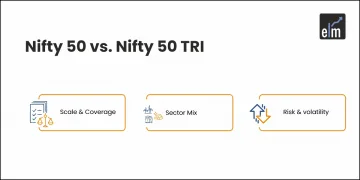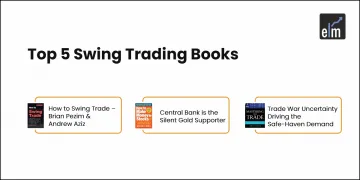Investing in the stock market can seem pretty intimidating, especially for new investors. One of the most effective ways to assess a company’s financial health and determine if its stock is fairly priced is through valuation ratios.
Whether you’re a beginner learning the ropes of fundamental analysis of stocks or an experienced investor, understanding these ratios can give you an edge in your stock analysis. Think of them as the cheat codes to decode a stock’s true potential.
Let’s explore the top five valuation ratios that every investor should know, providing a clear understanding of their significance and how you can use them effectively.
What Are Valuation Ratios?
Valuation ratios, often referred to as market value ratios, are metrics used to evaluate the relative value of a company’s shares. These ratios help you determine whether a stock is overvalued, undervalued, or fairly priced compared to its earnings, cash flow, or other financial metrics. By analysing these ratios, investors can gain insights into a company’s financial performance and make better investment choices.
5 Valuation Ratios You Need To Know
Price-to-Earnings Ratio (P/E Ratio)
The Price-to-Earnings (P/E) ratio is one of the most commonly used valuation ratios by investors. It helps you measure a company’s current share price relative to its earnings per share (EPS). It simply answers your question of how much the market willing to pay for every rupee the company earns.
The formula for calculating the P/E ratio is:
P/E Ratio = Market Price per Share/ Earnings per Share (EPS)
Key points to note:
- Interpretation: A high P/E ratio may indicate that investors expect future growth in earnings, while a low P/E ratio could suggest that the stock is undervalued or that the company is experiencing difficulties.
- Limitations: It does not account for differences in risk or growth rates among companies.
Price-to-Cash Flow Ratio (P/CF Ratio)
The Price-to-Cash Flow (P/CF) ratio evaluates how much investors are willing to pay for each dollar of cash flow generated by the company. This ratio is particularly useful because it focuses on cash generation rather than accounting profits. The formula is:
P/CF Ratio = Market Price per Share/ Cash Flow per Share
A lower P/CF ratio indicates that a stock may be undervalued relative to its cash-generating ability.
Key Points:
- Interpretation: A lower P/CF ratio is generally more desirable.
- Usage: Effective for comparing companies with different capital structures.
Return on Equity (RoE) Ratio
Return on Equity (RoE) measures a company’s profitability by comparing net income to shareholders’ equity. It indicates how effectively management is using equity financing to generate profits. The formula for RoE is:
RoE = Net Income/ Shareholders Equity
A higher RoE suggests that a company is efficient at generating profits from its equity base.
Key Points:
- Interpretation: A sustainable and increasing RoE over time indicates strong management performance.
- Comparison: Useful for comparing companies within the same industry.
Debt-to-Equity Ratio
The Debt-to-Equity (D/E) ratio assesses a company’s financial leverage by comparing its total liabilities to shareholders’ equity. This ratio helps investors understand how much debt a company is using to finance its operations relative to equity. It answers a simple but important question: is the company relying more on borrowed money (debt) or the money from its owners (equity) to run its business?
The formula is:
Debt to Equity Ratio = Total Liabilities/ Shareholders Equity
A high D/E ratio may indicate higher financial risk, while a low D/E ratio suggests lower risk and greater financial stability.
Key Points:
- Interpretation: A high D/E ratio can signal potential financial distress.
- Usage: Important for assessing risk in capital-intensive industries.
Dividend-Price Ratio
The Dividend-Price (D/P) ratio, also known as the dividend yield, measures the annual dividend payment relative to the stock’s market price. It provides insight into the income generated from an investment in relation to its price. The formula is:
Dividend Price Ratio = Annual Dividends per Share/ Market Price per Share
This ratio is particularly appealing to income-focused investors looking for regular returns from their investments.
Key Points:
- Interpretation: A higher D/P ratio indicates better returns for dividend-seeking investors.
- Consideration: Should be analysed alongside payout ratios and company growth prospects.
Which Valuation Ratio is Right For You?
Choosing the right valuation ratio depends on your investment strategy and goals:
If you are focused on growth stocks, consider utilising the P/E ratio and ROE to gauge future potential.
For income-focused investments, prioritise the Dividend-Price ratio to assess yield.
Additionally, If you are concerned about your financial stability and risk, look closely at the Debt-to-Equity ratio alongside cash flow metrics like the P/CF ratio.
Understanding these nuances will enhance your ability to conduct thorough fundamental analysis of stocks and make informed decisions in the share market.
However, mastering fundamental analysis can feel overwhelming for beginners. This is where the experts at Elearnmarkets step in to bridge the gap. Our Stock Market Fundamental Analysis Course is specifically designed to help learners develop a deep understanding of these critical ratios and how to apply them effectively.
Conclusion
Valuation ratios serve as indispensable tools if you’re looking to assess stock value effectively. By understanding and applying these top five valuation ratios, you can gain valuable insights into a company’s financial health and make more informed investment decisions. As you learn fundamental analysis of stocks through courses or self-study, integrating these valuation ratios into your evaluation process will empower you as an investor.
You can use Fundamental Scans to pick stocks for investment
Frequently Asked Questions (FAQ)
1. What is the ratio method of valuation?
The ratio method of valuation involves using various financial ratios to assess a company’s value relative to its earnings, cash flow, or other metrics. This method helps investors determine if a stock is overvalued or undervalued based on historical or projected performance.
2. How to calculate valuation ratios?
Valuation ratios are calculated using specific formulas that relate stock price to earnings, cash flow, equity, or dividends. For example:
P/E Ratio: Market Price per Share/EPS
P/CF Ratio: Market Price per Share/ Cash Flow per Share
Each ratio has its own unique calculation method based on relevant financial data.
3. How to calculate company value?
To calculate a company’s value using valuation ratios:
- Select appropriate ratios based on your analysis focus (for example: earnings-based or cash flow-based).
- Gather necessary financial data from the company’s financial statements.
- Apply the formulas for each selected valuation ratio.
- Compare these ratios against industry benchmarks or historical data to assess value accurately.






